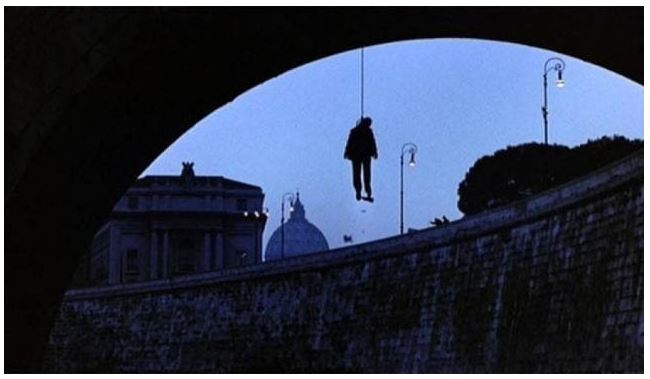In Freemasonry the individual who presents himself at the door of a Masonic Lodge “properly prepared and humbly soliciting to be admitted to the mysteries and privileges of Ancient Freemasonry” is called the “Initiate”. What leads him there, is an act of faith. He comes because in life he has a feeling of incompleteness and because he finds that pursuing ephemeral pleasures does not satisfies his soul.
Every Initiate in every Mystery must pledge secrecy for what will be communicated to him during the ceremony. Such constraint has been imposed on him since time immemorial and evidence exists that this was customary also in the days of the Guilds and of the operative medieval stone masons.
The solemn promise of the modern Initiate, however, is not on a par with the oath of the ancient craftsmen.
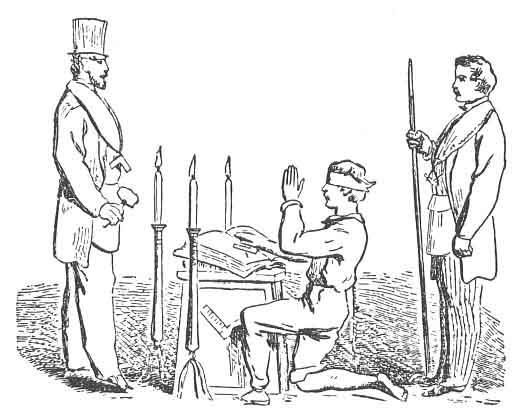 According to Bernard Jones [1] “the oath is a solemn appeal to God in support of the truth of a declaration made and in witness that a promise will be kept”; note the words “an appeal to God”. An oath is also neither objectionable nor can it be open to criticism, unless the oath itself is immoral. What an Initiate swears on the Volume of the Sacred Law nowadays is instead an Obligation, which is described as a binding agreement made under pain of a sanction if it is unilaterally broken. Essentially, ritual revisions through time have eroded and eventually removed the authority and intensity initially present in the oath and turned it into a mere promise. For that reason it is felt necessary to give the obligation a mantle of solemnity by asking the Initiate to recite the ritual words in a manner similar to giving testimony in a Court of Law and seal his promise by kissing the VSL.
According to Bernard Jones [1] “the oath is a solemn appeal to God in support of the truth of a declaration made and in witness that a promise will be kept”; note the words “an appeal to God”. An oath is also neither objectionable nor can it be open to criticism, unless the oath itself is immoral. What an Initiate swears on the Volume of the Sacred Law nowadays is instead an Obligation, which is described as a binding agreement made under pain of a sanction if it is unilaterally broken. Essentially, ritual revisions through time have eroded and eventually removed the authority and intensity initially present in the oath and turned it into a mere promise. For that reason it is felt necessary to give the obligation a mantle of solemnity by asking the Initiate to recite the ritual words in a manner similar to giving testimony in a Court of Law and seal his promise by kissing the VSL.
Both oaths and obligations bind society together and stop it from falling into disorder, confusion, anarchy ; they also insure that justice keeps being administered. All authority custodians, legislators, civil servants and State officials are bound by their oath of office and so too are the politicians, even though the latter regularly commit perjury with a despairing indifference. The Romans punished this sin by tearing the sinner’s tongue out by the roots.
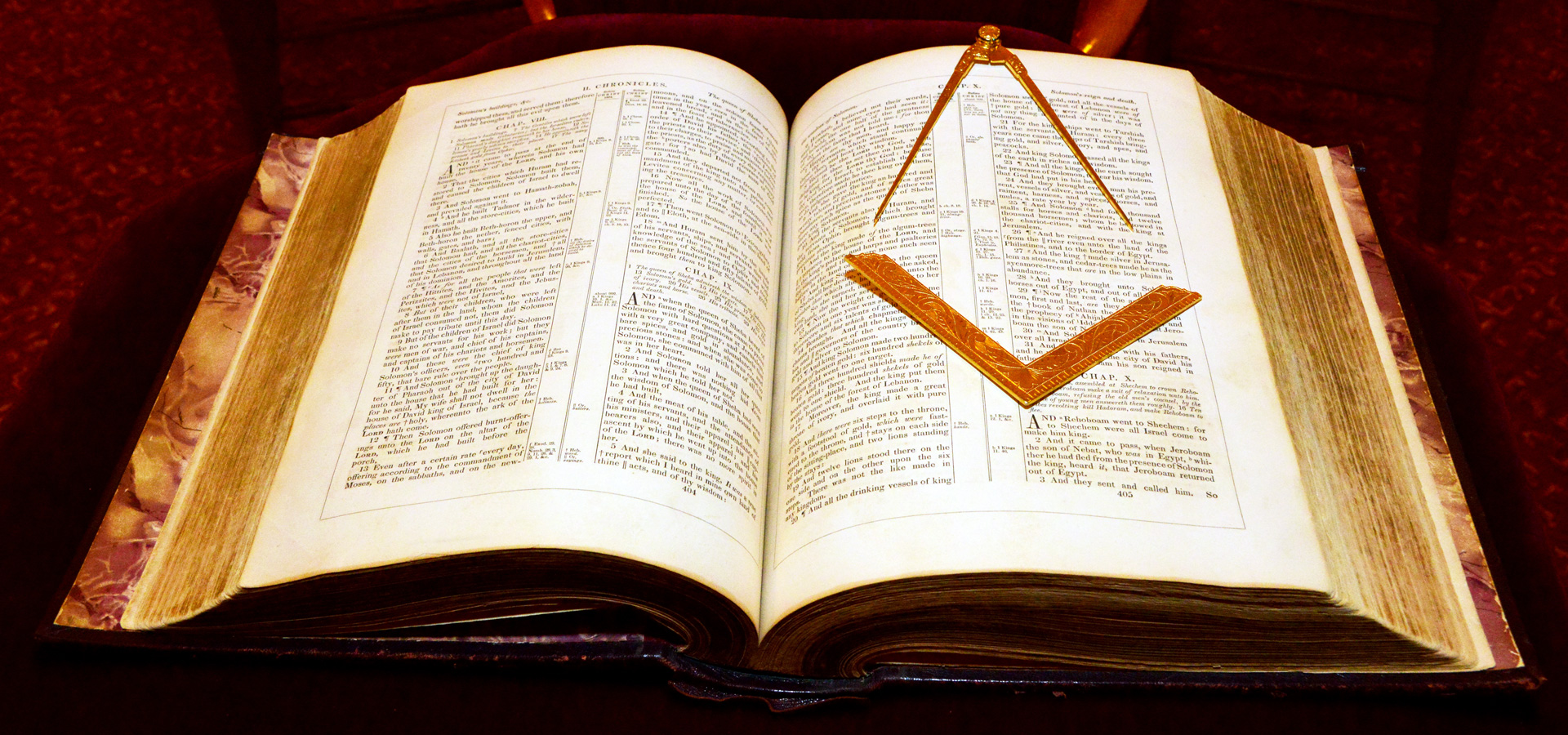
To make the promise a solemn obligation, the Initiate places his right hand on the VSL laid open in front of him ; the exception to this is given only by the manner in which Jews swear in a strictly Jewish Lodge, which they do by standing and being covered . To allow a non Christian into the Order, the VSL on which the Initiate gives his obligation will vary depending on his religious faith so that either the Bible, the Koran, or any relevant other sacred text will have been placed open on the Master’s pedestal, ready to be sworn on.
In the Old Charges the Initiate requires to take the oath “without evasion, equivocation or mental reservation of any kind”, meaning that there must not be any intentional disclosure to the profane world. Breaking an oath in Freemasonry is considered a serious matter because it involves bestowed knowledge that is used only for a particular level of spiritual consciousness. If the Freemason communicates it to someone who is from a lower spiritual plane, it will lead to profane interpretation and use. The recipient cannot interpret that knowledge nor handle the energy that accompanies it. This will damage both he who gives and he who receives.
In ancient times it was accepted that the method and place of execution should, were possible, symbolically reflect the nature of the crime. In London, for 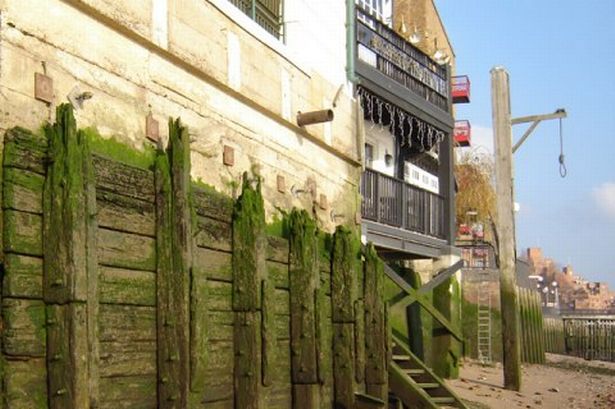 example, the Admiralty Courts condemned sea-pirates, smugglers and mutineers to death by hanging them on the River Thames. At Execution Dock in Wapping – which was in use for more than 400 years – a scaffold for hanging was placed at low water mark so that when the water came in, it would suffocate the condemned individual and the tides would wash him three times. The Dock saw at least 78 hangings between 1735 and 1830.
example, the Admiralty Courts condemned sea-pirates, smugglers and mutineers to death by hanging them on the River Thames. At Execution Dock in Wapping – which was in use for more than 400 years – a scaffold for hanging was placed at low water mark so that when the water came in, it would suffocate the condemned individual and the tides would wash him three times. The Dock saw at least 78 hangings between 1735 and 1830.
Visit the pub called The Prospect of Whitby if you want to see with your own eyes the replica of the gallows complete with hanging noose. The Pub has been on the site since the 1520s.
Punishment could be barbaric in the past and often its severity bore no proportion to the crime committed. Gould [2] writes that King Edgar punished a thief by mutilation and afterwards cast his body, in which there was still life, “to the beasts of prey and the fowls of the heaven”. That monarch is better known in history 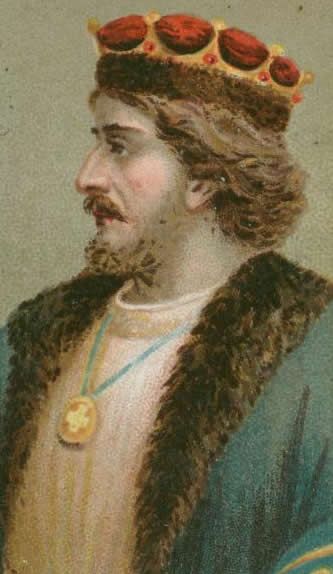 as Edgar the Peaceful ! The offence of stealing a chicken in the 17th and 18th centuries would often be punished with the death penalty. If this sounds absurd and too severe,it might shock you to know the punishment the ancient Jews dispensed for breaking one’s word. The parties to an agreement would kill and divide in two a fat cow and then walk between the carcass portions to seal their arrangement. If one violated the pact, he would himself suffer the same death of the animal and his body would then be left as “meat for the fowls of the heavens and to the beasts of the earth“. (Book of Jeremiah, xxxiv. 20)
as Edgar the Peaceful ! The offence of stealing a chicken in the 17th and 18th centuries would often be punished with the death penalty. If this sounds absurd and too severe,it might shock you to know the punishment the ancient Jews dispensed for breaking one’s word. The parties to an agreement would kill and divide in two a fat cow and then walk between the carcass portions to seal their arrangement. If one violated the pact, he would himself suffer the same death of the animal and his body would then be left as “meat for the fowls of the heavens and to the beasts of the earth“. (Book of Jeremiah, xxxiv. 20)
Freemasonry is described as the Gentle Craft because it teaches brotherly love, relief, truth and love of God, charity, mutual help. But from ‘A Dialogue between Simon, a Town Mason and Philip, a Travelling Mason’ – which dates back to 1730/1740 [3] – we learn of the following dreadful penalty that was threatened to a Freemason if he broke his oath: (…) My heart (shall be) plucked from my left breast, my tongue plucked from the roof of my mouth, my throat cut, my body to be torn to pieces by wild horses, to be buried in the sands of the sea where the tide flows in 24 hours, taken up and burnt to ashes and sifted where the four winds blow that there may be no more remembrance of me. So help me God”.
VICTIMS OF MASONIC PUNISHMENT ?
The famous music genius Wolfgang Amadeus Mozart was a Brother of the Order and tragically died at his home in Vienna at the premature age of 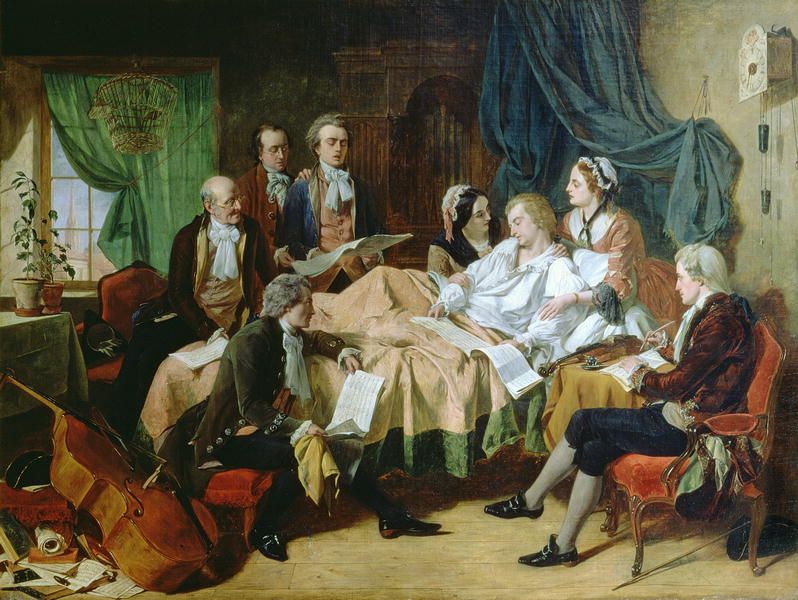 thirty-three. Mozart had unwisely disclosed a number of Masonic secrets in his Opera “The Magic Flute” and the story goes that the Masons took revenge by poisoning him to death. More on this story and Mozart’s life can be read here .
thirty-three. Mozart had unwisely disclosed a number of Masonic secrets in his Opera “The Magic Flute” and the story goes that the Masons took revenge by poisoning him to death. More on this story and Mozart’s life can be read here .
Then there is the William Morgan Affair, the tale of a bricklayer who lived in New York in the 1820s. No evidence has surfaced of William having been 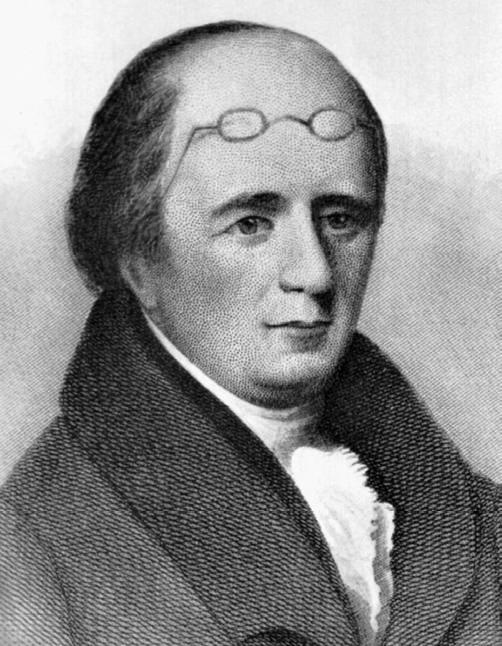 initiated in a Masonic lodge but the man cunningly found his way into the Royal Arch – a superior Masonic degree – through the Western Star Chapter R.A.M. No. 33 of LeRoy, New York. When suspicions about his regularity began to surface and spread, William went on the attack. He threatened the Order with a book in which he would expose all the Masonic ritual secrets and procedures. But before he could register for copyrights and publish it , the authorities arrested him on a charge of unpaid debts. His release came when an anonymous benefactor paid the creditors, but as soon as William was freed three Freemasons – Chesebro, Lawson, Sawyer – forced him on a cart and drove him to the 150 milt Ft.Niagara. It was the autumn of the year 1826. Nothing was heard of Morgan until October 1827 when the sea washed a body ashore that Morgan’s widow identified as that of her husband and caused the Masonic murder theory to capture America’s imagination. There are however so many twists in this story that I advice you to read the full article here .
initiated in a Masonic lodge but the man cunningly found his way into the Royal Arch – a superior Masonic degree – through the Western Star Chapter R.A.M. No. 33 of LeRoy, New York. When suspicions about his regularity began to surface and spread, William went on the attack. He threatened the Order with a book in which he would expose all the Masonic ritual secrets and procedures. But before he could register for copyrights and publish it , the authorities arrested him on a charge of unpaid debts. His release came when an anonymous benefactor paid the creditors, but as soon as William was freed three Freemasons – Chesebro, Lawson, Sawyer – forced him on a cart and drove him to the 150 milt Ft.Niagara. It was the autumn of the year 1826. Nothing was heard of Morgan until October 1827 when the sea washed a body ashore that Morgan’s widow identified as that of her husband and caused the Masonic murder theory to capture America’s imagination. There are however so many twists in this story that I advice you to read the full article here .
Closer home we had the case of the Italian Banker Roberto Calvi, a member of the Masonic Lodge Propaganda Due (P2), who almost financially broke the 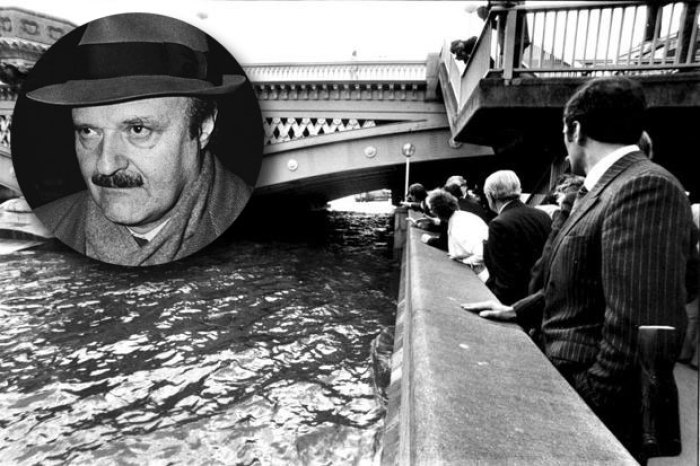 Vatican. After joining Freemasonry Calvi rose from the anonymous position of accountant at the Banco Ambrosiano, Milan, to that of its Chairman. His role was to recycle the substantial funds deposited by the I.O.R. (Istituto per le Opere Religiose) – the Vatican Bank with a deceiving name! – and money that came from the Mafia and the Camorra , from corrupted Italian politicians and secret political organizations. In 1981 the Italian Justice sentenced Calvi to four years in jail for illegal foreign currency deals, prompting him to flee to London in June 1982 on a false passport. His hiding had been taken care of by the Mafia which no doubt was calling in all its money. Calvi began sending signals back to Rome that if his court case appeal confirmed the original sentence and forced him to return to Italy, he would tell everything he knew. On 18th June 1982 Roberto Calvi’s body was found hanging by a rope under Blackfriars Bridge. The Freemasons have ever since being suspected of his
Vatican. After joining Freemasonry Calvi rose from the anonymous position of accountant at the Banco Ambrosiano, Milan, to that of its Chairman. His role was to recycle the substantial funds deposited by the I.O.R. (Istituto per le Opere Religiose) – the Vatican Bank with a deceiving name! – and money that came from the Mafia and the Camorra , from corrupted Italian politicians and secret political organizations. In 1981 the Italian Justice sentenced Calvi to four years in jail for illegal foreign currency deals, prompting him to flee to London in June 1982 on a false passport. His hiding had been taken care of by the Mafia which no doubt was calling in all its money. Calvi began sending signals back to Rome that if his court case appeal confirmed the original sentence and forced him to return to Italy, he would tell everything he knew. On 18th June 1982 Roberto Calvi’s body was found hanging by a rope under Blackfriars Bridge. The Freemasons have ever since being suspected of his 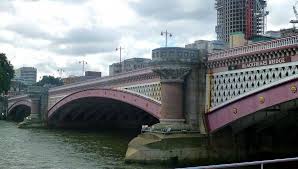 murder and in truth Calvi had only himself to blame for ending his life ; he had made the mistake of coming to the home of the most powerful Masonic Grand Lodge in the world! Instead of the help that , as a Brother in distress, he perhaps expected to receive, he was instead made to face the music.
murder and in truth Calvi had only himself to blame for ending his life ; he had made the mistake of coming to the home of the most powerful Masonic Grand Lodge in the world! Instead of the help that , as a Brother in distress, he perhaps expected to receive, he was instead made to face the music.
CONCLUSION
There is a different form of obligation in every degree of Freemasonry, but all of them equally threaten to bring about, in a terrifying manner, the death of the Freemason who betrays his oath. But murder is a crime, so when the two main Grand Lodges of England (the Ancient and the Modern) merged in 1813 , they decided to insert the non physical penalty into the Entered Apprentice’s obligation and explain to him that any horrible act of physical violence mentioned therein is only symbolic. In England nowadays the Initiate is informed that should he break his obligation he will be “branded as a willfully perjured individual, void of moral worth and totally unfit to be received into this worthy and warranted Lodge or society of men who prize honor and virtue above the external advantages of rank and fortune”.
So out went the ancient feared Masonic punishments of tongue ripping and disembowelling and in came the…expulsion for dishonour. To me Freemasonry is all about tradition and the duty of preserving its ancient values, customs and secrets. Alas, the many changes introduced with the aim of opening and modernising the Order are transforming Freemasonry into yet another social club [4] intent on charitable activities and obsessed with Initiations and honorifics.
What is Freemasonry for you?
Leonardo Monno Anglisani
The author forbids any reproduction or publication of this article, in full or in part, without his explicit authorisation.
[1] Bernard E. Jones, Pen & Brush Lodge 2909, author of “Freemason Guide and Compendium”
[2] Robert Freke Gould (10 November 1836 – 26 March 1915) was a soldier, barrister and a prominent Freemason and Masonic historian
[3] The Dialogue between Simon and Philip is contained within the same manuscript as The whole institution of Masonry (1724). It appears to represent a conversation between two Masons
[4] Like the Rotary and The Lyons and other Fraternity associations like the Oddfellows Club
SOURCES
- The Dormer Lodge papers
- The Masonic Trowel
- The Meaning of Masonic Obligation by R.V. Harris
- Short talk Bulletin of the Masonic Service Association of the U.S.A. – vol 11 March 1933
- MUSIC AND THE CRAFT – LUIGI BORGHI , A FREEMASON OF THE NINE MUSES LODGE - October 31, 2022
- SPILSBURY – THE FREEMASON FATHER OF FORENSIC SCIENCE - April 18, 2022
- THE MASONIC GLOVES - March 21, 2022

